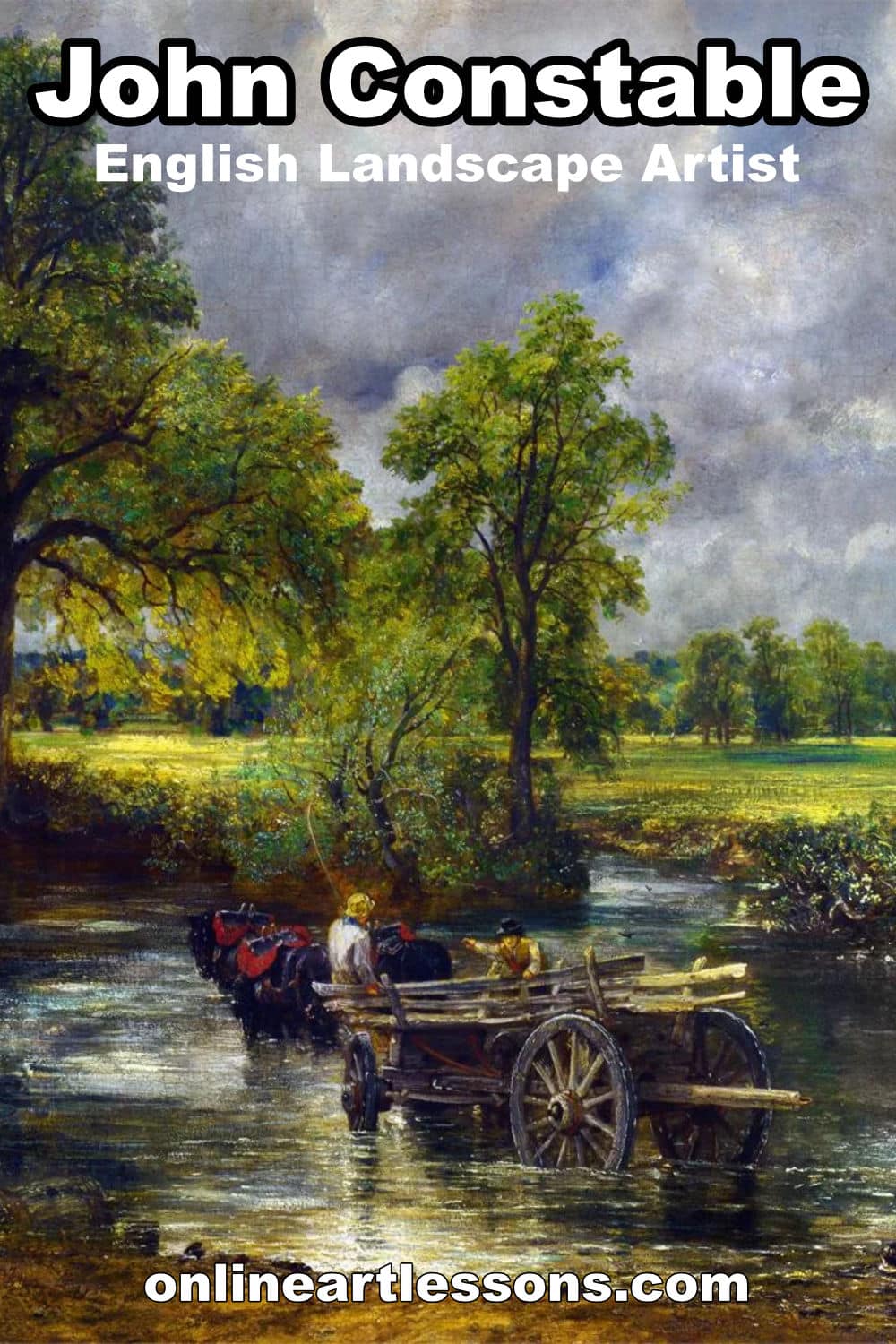Famous for his romantic landscapes, brimming with life and vitality, John Constable was surprisingly slow to gain recognition for his art. His paintings were disliked by much of the artistic community in England and he did not receive formal recognition for his abilities until relatively late in his life. In contrast, he was much loved in France where he inspired several artists to leave Paris and seek out the rural life that he portrayed so romantically.
Constable, alongside his contemporary Turner and the earlier artist Thomas Gainsborough, is widely credited with revolutionizing the landscape painting genre in England. He is a key figure in British art history, constructing an enduring image of the English landscape that still survives today in the areas known fondly as ‘Constable Country’.
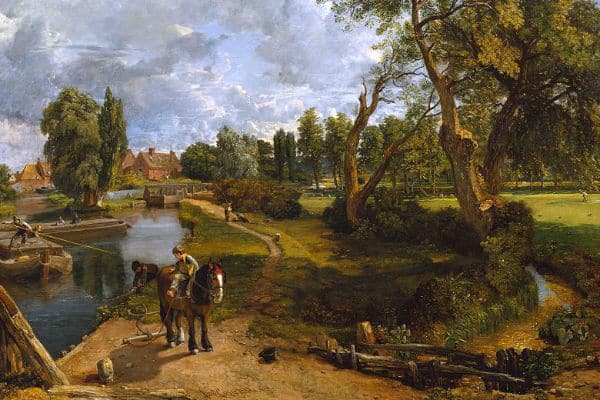
Journey to Becoming a Painter
Born in 1776, Constable’s interest in art started from an early age. Growing up in East Bergholt in Suffolk, where his father had built a grand house for the family, Constable had a privileged childhood. As he got older, he developed his art as a gentleman’s pastime, which meant painting for leisure, rather than as a profession.
Though he longed to be a successful artist, Constable’s first job was working for the family business. His father, Golding Constable, was a wealthy merchant who transported coal and corn on the River Stour, as well as running a number of other enterprises. It was customary at the time for the eldest son to take over the business but Constable’s older brother had a disability that made him unable to work. As a result, the duty fell to John.
It was his mother, Ann, who first supported his wish to be a painter. She introduced him to Sir George Beaumont, a member of the local gentry who was an amateur painter and collector of the old masters. Though he was still tied to the family business, this connection showed Constable a glimpse of what he could become; inspiring him with a range of classical landscapes that encapsulated the grandeur and beauty of the genre.
After seven hard years, Constable’s younger brother Abram agreed to take responsibility for the business, freeing Constable from his obligations. This was an enormous relief to him and he immediately began actively pursuing a career in painting. Thanks to the family’s wealth and Beaumont’s influence at the Royal Academy, Constable was able to enter the Royal Academy Schools in 1799, funded by his father.
From this point onwards, Constable received formal training in painting but he still failed to sell a large number of his artworks. He relied on commissions and painted portraits of the rural upper and middle classes, on the advice of his mother. At this time, there was more money to be made in portraiture but Constable had liitle interest in this line of painting.
Maria Bicknell
Constable married his love Maria Bicknell in 1816, after seven years of secret courtship. When his father died, he went from being a poor artist, surviving on an allowance of £100 per year from his parents, to being fairly wealthy. The money from his father’s will and the income from the family business finally enabled him to support a wife and family. With this change in circumstances, they married immediately, despite her family’s disapproval.
He painted Maria several times, the most famous being a portrait made shortly after they were engaged entitled ‘Maria Bicknell, Mrs John Constable’ from July 1816. There are also simple sketches surviving, including a pained sketch he made that is an intimate portrait of her and two of their sons, illuminated by the light from a single window.
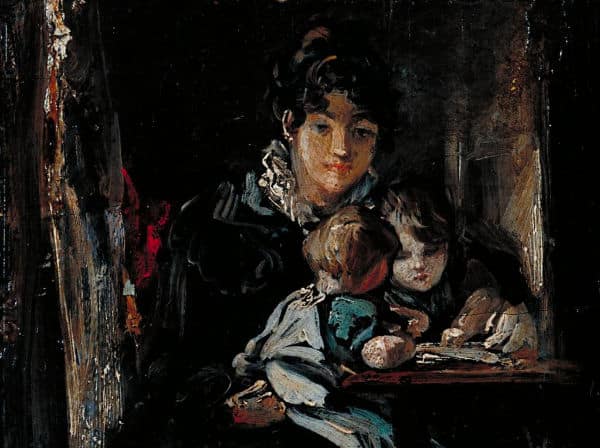
Constable quickly realised that he needed to make his painting a financial success in order to support his growing family. Making a conscious effort to sell his paintings, he began a number of ambitious six-foot canvasses. This size contrasted with other landscape paintings at the time, which tended to be smaller and more transportable. Either to make his work stand out at the Royal Academy, or to assert landscape painting into the ranks of the more popular and impressive painting genres at the time, Constable began his project with a series of scenes on the River Stour.
Thankfully, the works were a commercial success. In particular, ‘The Hay Wain’, featuring a picturesque white cottage and a horse and cart, was one of the favorites from this series. It was exhibited at the Royal Academy from 1818 to 1825.
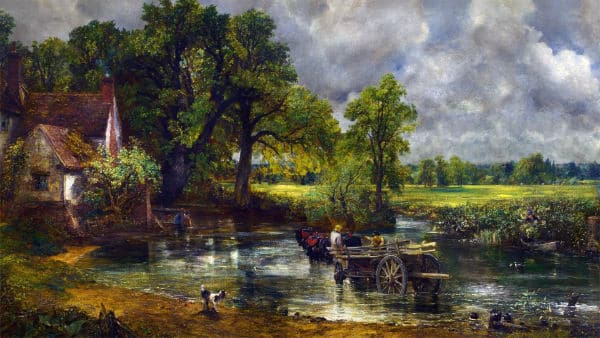
Constable’s Inspirations
Constable’s first major artistic inspiration was the work of Claude Lorrain, whose paintings he was introduced to by Beaumont. Lorraine’s 1646 piece, ‘Hagar and the Angel’ particularly captured Constable’s imagination and he made a copy of it. His later work from 1827, ‘The Vale of Dedham’, alludes to the painting, echoing the vertical format and composition. This style involved layering and overlapping the scenery to create a sense of depth. It has been suggested that this was Constable’s way of marking the death of Beaumont in 1827, expressing their shared love of Lorrain.
Growing up in East Bergholt, Constable painted the Suffolk landscape first and foremost, depicting ordinary life in the English countryside and especially around the River Stour. He loved his home county and treasured the rolling hills, woodlands and river above all else. He also took a sketching tour of Norfolk in 1794 and of the Peak District and Lake District in the early 1800s. However, he found these more rugged landscapes too lonely and returned home with a renewed fondness for Suffolk.
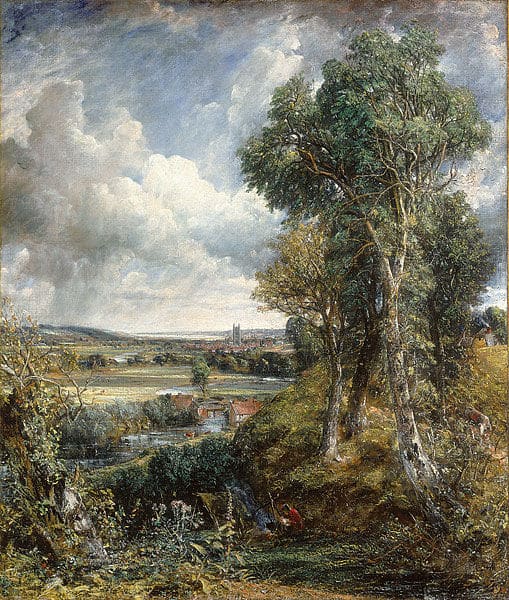
This affection comes through in his paintings. The Suffolk landscape is depicted in luminous colors, using different textures to depict the natural lines he observed whilst painting outdoors. He would use a combination of palette knives and brushes to create his surfaces. In doing so, he aimed to conjure up the mood of the rural scene. The application of paint varies in his work, with some areas thick with paint and others delicate and thin. To depict the reflections of the light on the water and dappled sunlight on the land, he would use small speckles of white.
In painting the English countryside, Constable sought to depict daily life. His work is not focused on figures from literature, religion, or Greek myth but instead features working-class laborers from boat builders to ploughmen. They inhabit his scenes and add a sense of peace and timelessness to many of his paintings. Historians have attributed his successes with pieces like ‘The Hay Wain’ to the nostalgia of the wealthier classes in the wake of the Industrial Revolution. His works showed idyllic pastoral scenes that appealed to his privileged audience who were concerned by the hasty social and political changes taking place around them.
Constable’s inspirations shifted as a result of Maria’s change in health. She gave birth to seven children in total but pregnancy and childbirth had a severe impact on her health. The family was forced to move out of London to Hampstead and travel frequently to Brighton in an attempt to improve her condition. She died in 1828 at the age of 41.
The legacy of Maria survives in Constable’s paintings of the Brighton Coast and several sketches and oil paintings of Hampstead, which was a rural area at that time. In particular, he made studies of the clouds above Hampstead, many of which he painted in under an hour in order to capture the immediacy of the weather conditions. He saw clouds as a key aspect of landscape painting and sought to perfect his art through practice.
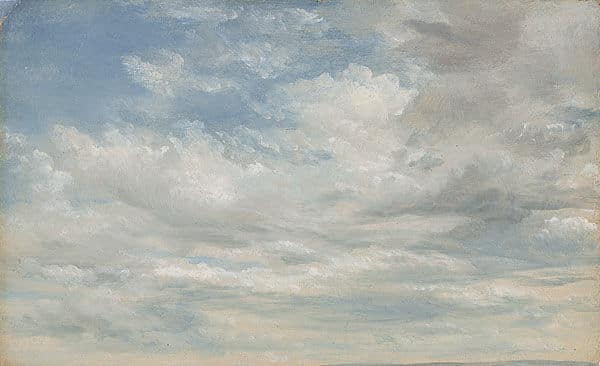
Some of Constable’s most expressive works involve the sea as his subject. One oil sketch from Brighton beach, ‘Rainstorm over the sea’, dated to between 1824 and 1828 is an energetic example of his range of styles. At the same time, it is a demonstration of his definitive move away from the tight and restricting painting fashion that was popular at the time, whilst showing his interest in the weather and the impact that it has on the light and natural color palette.
Constable’s Romanticism
The Romantic style was popular during Constable’s lifetime; the period from 1816 to 1837 is known as High Romanticism. In many ways, he fits into the archetype of the Romantic painter, using symbols such as rainbows and with regularity. However, he diverged from the Romantics in other ways.
Most notably, his works were more focused on realism than many other Romantic artworks at the time, which tended to favor drama over accuracy. This love of the dramatic often led Romantic painters to focus on subjects that were wild and rugged, including mountains or ruins. Though Constable did have a few pieces in this style, including ‘Stonehenge’ from 1835, he preferred more gentle landscapes and subjects.
Similarly, his bright, broad color palette gave his paintings a more naturalistic feel that was not in keeping with much of the Romantic movement. On the other hand, he played off of his own personality, endowing his paintings with his own emotions and passion – a very romantic thing to do!
The Barbizon School and Impressionism
One of the paradoxes of Constable’s life is that his artwork was hugely underappreciated in Britain whilst being heavily praised in France. Many French artists were enthralled by English and Scottish culture and Constable’s work was a perfect portrayal of the romanticism they wanted to see. ‘The Hay Wain’ won a Gold Medal at the Paris Salon three years after being exhibited at the Royal Academy.
Not only was there affection for Constable’s work in France, he also inspired a number of French artists to seek out the everyday, rural life of their country and paint it as he had done. This eventually led to the Barbizon School, named after the village of Barbizon outside Paris where many artists stayed whilst searching for their ‘ordinary’ subjects. Artists in the Barbizon School included Jean-François Millet and Jean-Baptiste-Camille Coro. They sought to move away from the mythological and historical ideas of the landscape and depict it in its most natural form. These artists, like Constable, moved between Romanticism and Realism.
Constable was highly criticised in his native England for his brushwork. It was very unfashionable at the time to see the artist’s brushstrokes and every care was taken to make paintings look seamless and perfect. Constable diverged from this technique, preferring the immediacy of visible brushstrokes as he felt this enhanced his natural subjects. His fresh impasto style was adopted by many progressive French artists, along with his use of ‘atmospheric perspective’ to lend his scenes a feeling of subjectivity. This was very different to the French Neo-Classical style that was popular at the time.
This painting style has also been linked to the rise of Impressionism, both in France and Britain. As a result, Constable’s work experienced a rise in popularity in the early 20th century, after a dip in the mid-19th century thanks to the Gothic Revival. Though French impressionists rejected the idea that they had been inspired by Constable, there are some distinct parallels. For British impressionists like Philip Wilson Steer, who also painted everyday life and the English countryside, the influence is clear.
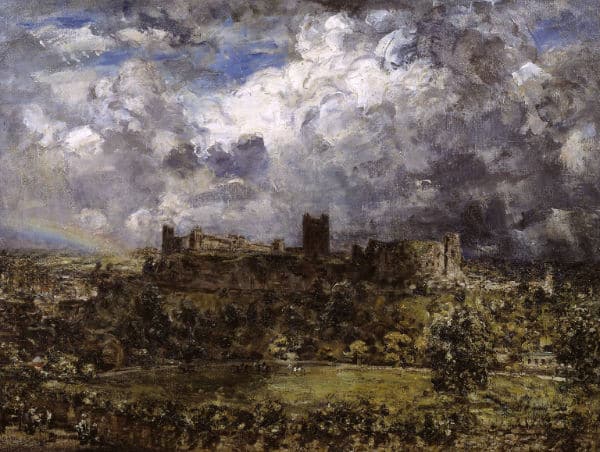
Conclusion
An original and impressive painter, Constable’s work is now treasured for its depictions of the English countryside in all its quaintness. He did not seek out remarkable or dramatic places, choosing to focus on the landscapes he knew best. This is what makes his work so human.
At the same time, he used a novel painting style, playing with textures to capture the imperfections and variety in his natural subjects and thereby contrasting sharply with the fashions of his day. This divergence meant he struggled to receive recognition for his artistry but forged a new path for other artists to follow. Consequently, Constable is now recognised as one of the key figures in the development of the landscape painting genre and the inspiration for several art movements. He inspired many artists with his focus on ordinary, everyday subjects, even while the world around him was changing rapidly.
If you enjoyed this article you will also enjoy the one on the history of controversial French artist Paul Gauguin.
Pin Me
